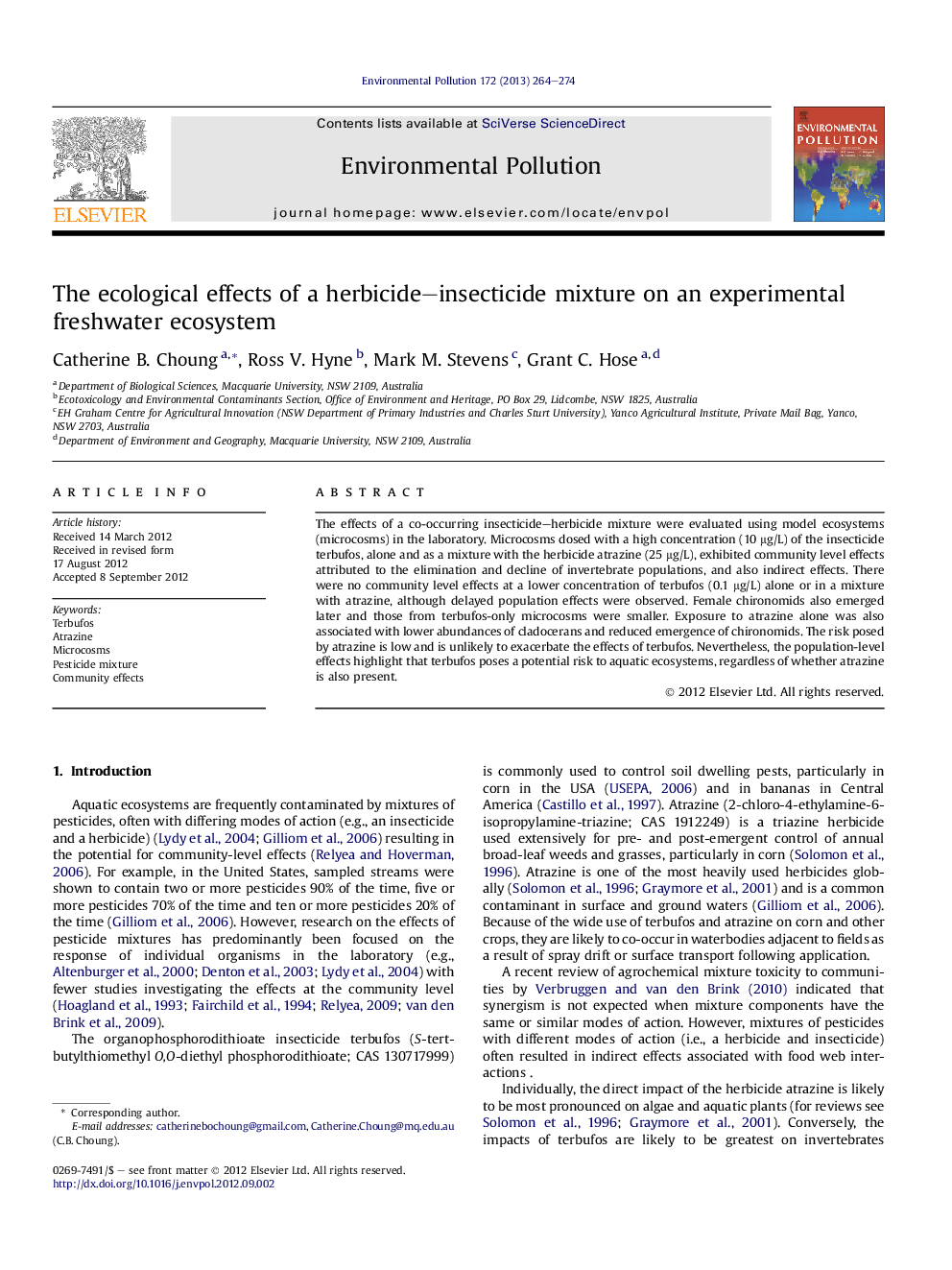| Article ID | Journal | Published Year | Pages | File Type |
|---|---|---|---|---|
| 4424740 | Environmental Pollution | 2013 | 11 Pages |
The effects of a co-occurring insecticide–herbicide mixture were evaluated using model ecosystems (microcosms) in the laboratory. Microcosms dosed with a high concentration (10 μg/L) of the insecticide terbufos, alone and as a mixture with the herbicide atrazine (25 μg/L), exhibited community level effects attributed to the elimination and decline of invertebrate populations, and also indirect effects. There were no community level effects at a lower concentration of terbufos (0.1 μg/L) alone or in a mixture with atrazine, although delayed population effects were observed. Female chironomids also emerged later and those from terbufos-only microcosms were smaller. Exposure to atrazine alone was also associated with lower abundances of cladocerans and reduced emergence of chironomids. The risk posed by atrazine is low and is unlikely to exacerbate the effects of terbufos. Nevertheless, the population-level effects highlight that terbufos poses a potential risk to aquatic ecosystems, regardless of whether atrazine is also present.
► Microcosms were used to assess the effects of a herbicide–insecticide mixture. ► High concentration of terbufos resulted in significant community level effects. ► Low dose of terbufos showed delayed population effects and chironomid emergence. ► The presence of atrazine is unlikely to exacerbate effects of terbufos. ► Observed chronic effects show that terbufos poses a risk to aquatic ecosystems.
